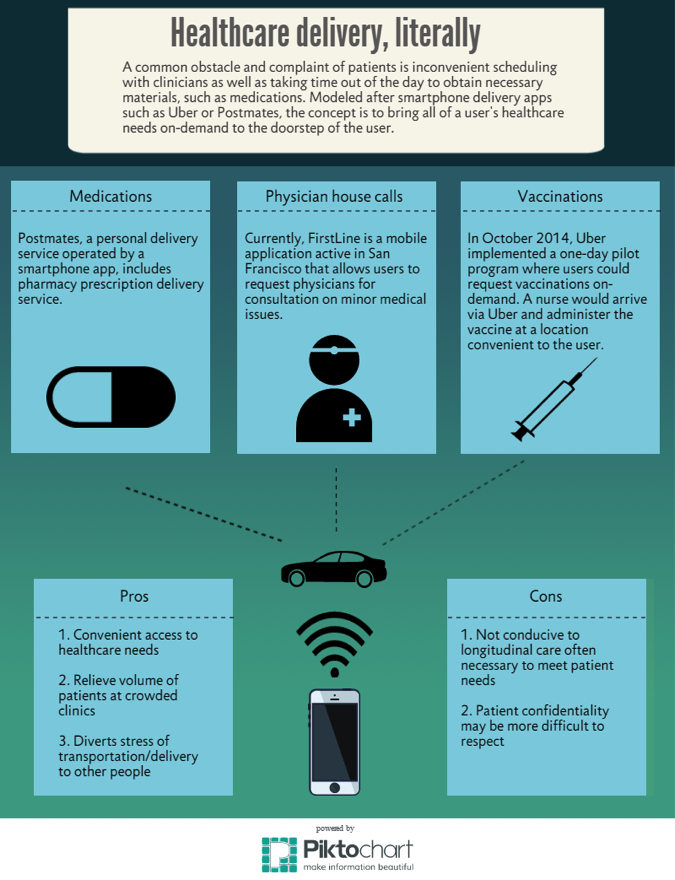Guest posting by Charles Ho
Convenient smartphone applications that brings services to you, such as Uber or Postmates, has gained significant popularity in recent years. This made me think about how we can utilize such convenient services in the context of healthcare. Upon my research, I constructed the following infographic of a few developing examples of the usage of smartphone delivery apps for brining healthcare needs to the user. The benefits are obvious, such as scheduling convenience and reducing volume of unnecessary doctor visits.
While such services can be very appealing for their convenience, the disadvantages should be considered. As mentioned in a post in the Health Care Blog, these applications can be a quick solution for obtaining immediate health needs. However, one should not rely on these services as their primary method of obtaining healthcare. The clinicians who operate “on-call” may not know your situation and background as well as one who has known you for years.4 Thus, one should be cautious when deciding to call in a random physician for a consult or to visit their regular doctor. Nevertheless, these solutions may be a positive start towards overcoming certain logistical barriers in healthcare.
REFERENCES
[1] Uber Health. <http://blog.uber.com/health>
[2] FirstLine. <http://www.firstlineapp.com/>
[3] Postmates. <http://blog.postmates.com/post/82934476334/the-doctor-is-in-postmates-brings-you-drugs>
[4] Khan, A, et.al. “Uber for health care?? Not so much.”. The Health Care Blog. <http://thehealthcareblog.com/blog/2014/02/06/uber-for-health-care-not-so-much/>

